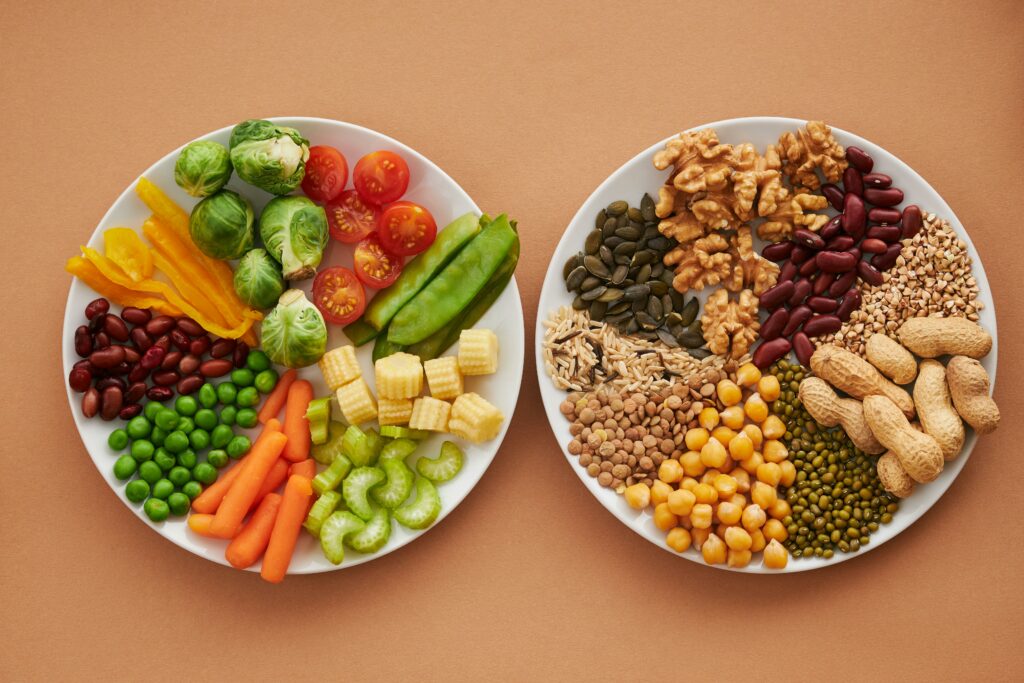When it comes to weight management and healthy eating, two common strategies often come up: counting calories and controlling portion sizes. While calorie counting has long been a popular method, research increasingly shows that portion control is more practical, sustainable, and beneficial for long-term health. Understanding the science behind portion sizes and how our bodies respond to food can help people make healthier choices without the stress of tracking every single calorie.
The Science Behind Portion Control vs. Calorie Counting
1. Human Perception and Overeating
Our brains are not always good at estimating calories, especially in calorie-dense foods like fast food, sweets, or fried snacks. A small slice of cake and a bowl of fruit salad may look similar in size but can differ by hundreds of calories. Studies from the American Journal of Clinical Nutrition show that people consistently underestimate calorie content, particularly in large portions. Portion control bypasses this error by focusing on quantity rather than complex calorie calculations.
2. Satiety and Hormonal Response
Calories are not equal when it comes to how full you feel. Protein and fibre-rich foods keep you satiated longer than processed carbs, even if the calorie count is the same. When we eat large portions of refined foods, blood sugar spikes and drops rapidly, leading to cravings and overeating. By managing portion sizes, especially of calorie-dense foods, we can regulate hormones like insulin and ghrelin (the hunger hormone) more effectively than by simply counting calories.
3. Sustainability and Behavioural Psychology
Calorie counting requires constant measuring, logging, and calculating, which many people find tedious. This often leads to burnout. Portion control, on the other hand, is simpler. Visual cues such as “half a plate of vegetables, one-quarter lean protein, and one-quarter whole grains” are easier to remember and apply daily. Behavioural studies in nutrition highlight that simple, consistent habits have a greater impact on long-term adherence than complicated tracking systems.
4. Metabolism and Nutrient Quality
Calorie-focused diets often overlook food quality. For example, 100 calories of sugary soda and 100 calories of nuts have very different effects on metabolism, satiety, and overall health. Portion control encourages moderation while allowing nutrient-dense foods to take priority. This aligns with research from the Harvard School of Public Health, which emphasises nutrient quality over calorie quantity for long-term disease prevention.
Practical Procedures for Portion Control

Portion control doesn’t mean depriving yourself. It means eating mindfully and giving your body what it needs in the right amounts. Here are some evidence-based strategies:
- Use the Plate Method
- Fill half your plate with vegetables and salads (high in fibre, low in calories).
- Fill one-quarter with lean proteins like fish, chicken, legumes, or tofu.
- Fill the remaining one-quarter with whole grains or starchy foods like brown rice, quinoa, or sweet potato.
- Follow the Hand Guide
- Protein: the size of your palm.
- Carbohydrates: the size of your cupped hand.
- Vegetables: the size of your fist.
- Fats: the size of your thumb.
This simple guide makes portion control easy without scales or apps.
- Eat Slowly and Mindfully
It takes about 20 minutes for your stomach to signal fullness to your brain. Eating quickly often leads to overeating. Slowing down and chewing properly helps with portion awareness. - Avoid Eating from Packets
Directly eating chips, cookies, or nuts from a large packet encourages mindless overeating. Instead, portion out a small bowl and put the rest away. - Use Smaller Plates and Bowls
Research in the Journal of Consumer Research shows that using smaller dishes can reduce food intake by up to 30% without affecting satiety. Our brains perceive the same amount of food as more filling when served on a smaller plate. - Pre-portion Snacks
If you enjoy snacks, prepare small portions in advance. This prevents accidental overeating, especially with calorie-dense foods like nuts, cheese, or trail mix. - Balance Indulgence with Moderation
Portion control allows you to enjoy occasional treats without guilt. For example, a small square of dark chocolate can satisfy cravings better than restricting yourself and then bingeing later.
Why Portion Control Works Better Long-Term
Counting calories often reduces eating into a mathematical exercise, making food feel restrictive. Portion control, however, helps build a healthier relationship with food. It trains your mind to recognise hunger and fullness cues, encourages variety, and prioritises nutrient-rich foods.
By focusing on portion sizes, people naturally end up reducing calorie intake without obsessively tracking numbers. This leads to better weight control, improved digestion, stable energy levels, and reduced risk of lifestyle diseases such as diabetes and heart disease.
Conclusion
While calorie counting can work in the short term, portion control offers a more practical and sustainable path to healthy living. It simplifies eating decisions, respects satiety signals, and emphasises food quality over numbers. By using simple tools like the plate method, hand guide, and mindful eating practices, anyone can maintain balance without stress.
References
- Rolls, B. J., Morris, E. L., & Roe, L. S. (2002). Portion size of food affects energy intake in normal-weight and overweight men and women. American Journal of Clinical Nutrition.
- Harvard T.H. Chan School of Public Health. “The Nutrition Source – Healthy Eating Plate.”
- Wansink, B., & van Ittersum, K. (2013). Portion size me: Plate-size induced consumption norms and win-win solutions for reducing food intake and waste. Journal of Experimental Psychology: Applied.
- Hill, J. O., & Wyatt, H. R. (2005). Role of physical activity in preventing and treating obesity. Journal of Applied Physiology.



